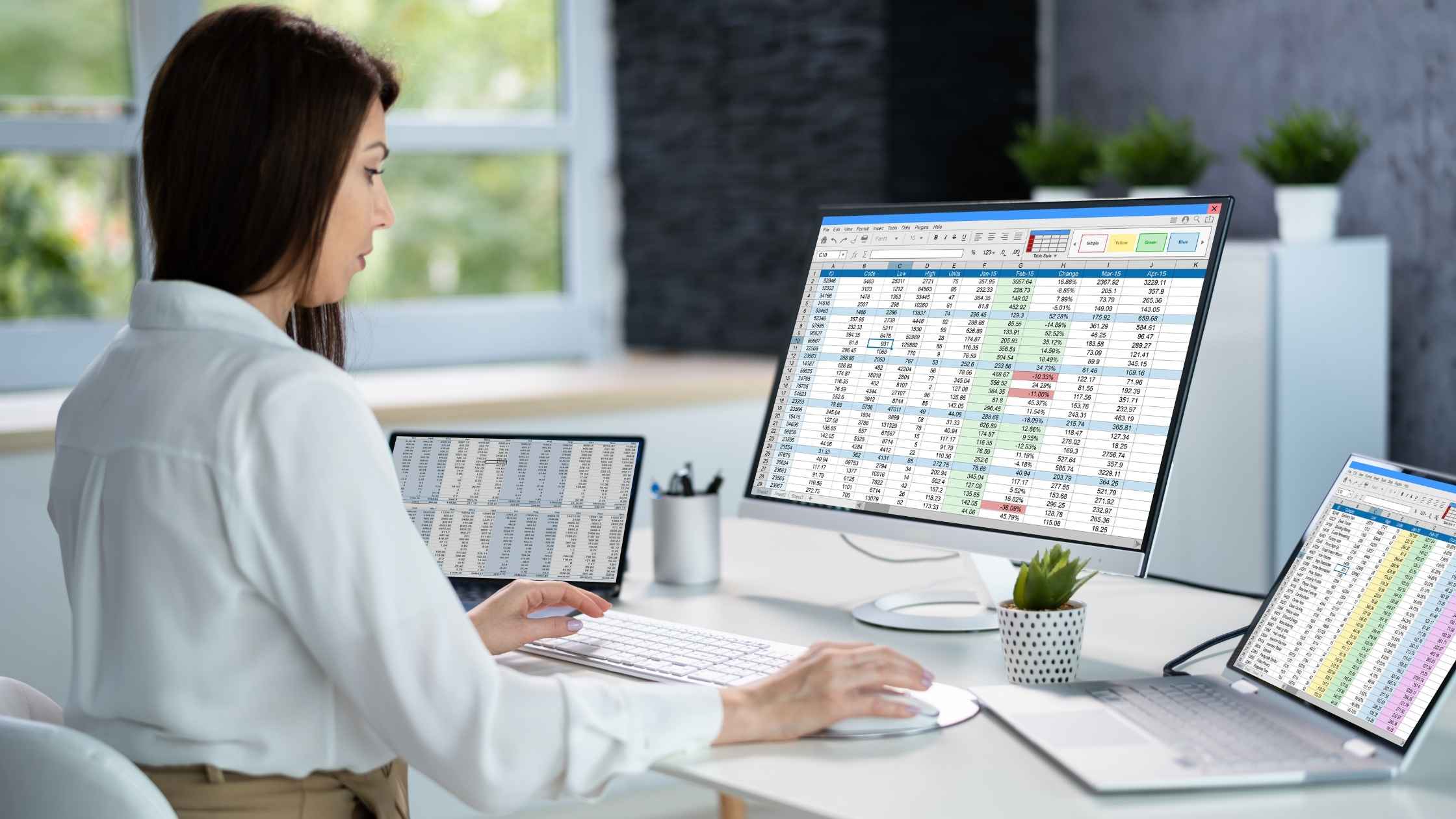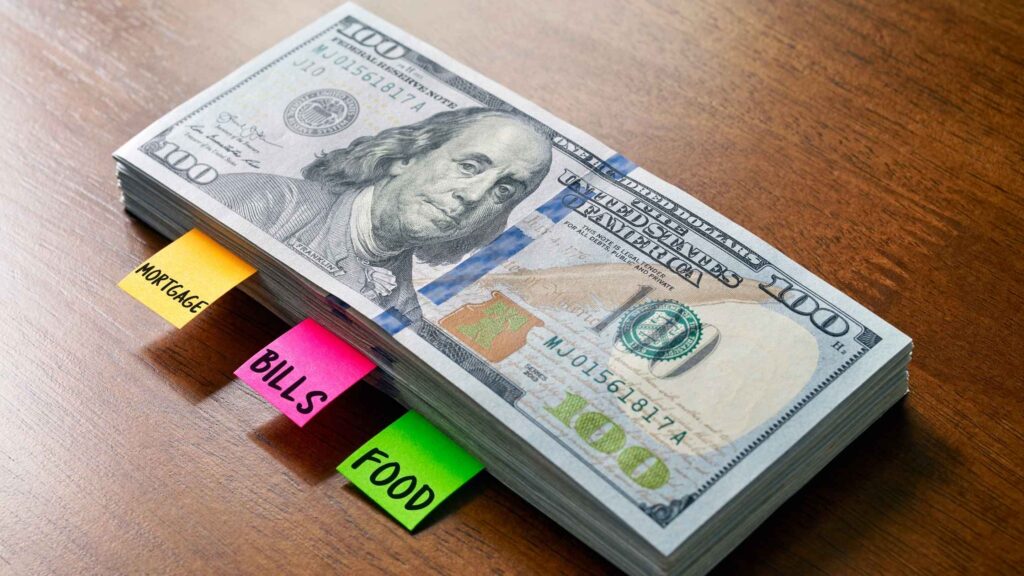Using a monthly expenses spreadsheet is the smartest way to take control of your money, reduce financial stress, and build long-term wealth. You're not alone if you've ever reached the end of the month wondering, “Where did all my money go?”.
Most people don’t track their spending, and that’s exactly why they stay stuck in financial survival mode. But the very minute you start using a monthly expenses spreadsheet, you are setting yourself up for success.
The beauty of spreadsheets is their simplicity. They give you the full picture, like what’s coming in, what’s going out, and where you might be overspending without realizing it.
More importantly, tracking monthly expenses isn’t about restriction, it’s about permission. It gives you the freedom to say yes to what truly matters, because you’ve already said no to what doesn’t.
Say Hello to Tiller: The Ultimate Financial Secret Weapon Behind Your Spreadsheet
There are hundreds of budgeting apps out there, but none combine flexibility and automation like Tiller. It’s a game-changer for anyone who wants the structure of a monthly expenses spreadsheet but hates manually entering transactions.
Tiller syncs your bank accounts, credit cards, and even investment accounts directly into Google Sheets or Microsoft Excel. This means you get a live-updated spreadsheet, customized to your life, with all the control of a manual sheet, minus the data entry.
I mean, you didn't think all those data entry jobs today existed because of the high demand for data entry, did you? Haha. I'm just kidding (kind of). But seriously, data entry is not fun, and Tiller helps solve that problem right off the bat!
Even better? Tiller comes with ready-made templates that are plug-and-play and ready to roll for you. You can personalize your budget, set financial goals, and track your progress all in one beautiful, automated space.
What Your Monthly Expenses Spreadsheet Should Actually Include
When building or customizing your monthly expenses spreadsheet, make sure it captures the full scope of your financial life. That means fixed and variable costs, short-term and long-term goals, and even room for occasional splurges.
Let’s break it down:
Your fixed expenses are the same each month, so think of your rent or mortgage, utilities, subscriptions, and insurance. These are non-negotiables and should be listed first.
Next, you’ve got variable expenses like groceries, gas, dining out, and shopping. These categories give you the most control and are where small tweaks can lead to saving money over time.
But don’t stop there. Add your savings goals to the spreadsheet too. Whether it’s a vacation, emergency fund, or early retirement, seeing your goals side-by-side with your spending keeps them top of mind.
With Tiller, you can use categories and tags to make this process smooth and repeatable. Set rules so that “Starbucks” always gets filed under “Coffee,” and let automation do the rest.
Watching Your Money “Work for You”
Here’s something wild that I found when researching about these spreadsheets and the benefits they have on one's life. Just the act of tracking your spending can change how you spend. Psychologists call this “behavioral feedback,” and it’s powerful.
When you log an expense, especially in a visual, dynamic tool like a monthly expenses spreadsheet, you become more mindful. Spending becomes intentional and not impulsive.
Tiller enhances this mindfulness because it doesn’t just show numbers, it also shows trends. Over time, you’ll notice patterns in your behavior. Maybe Fridays are your high-spend days. Maybe you always overspend at Target (hey, we’ve all been there).
Once you see the trends, you can start to break the patterns. This is the kind of insight that transforms casual budgeters into serious wealth-builders.
common Questions About Monthly Expenses Spreadsheets
How often should I update my monthly expenses spreadsheet?
With Tiller, you don’t have to! It updates daily by pulling in your transactions automatically. But it’s smart to review and categorize your expenses at least once a week to stay on top of your goals.
Can a spreadsheet really help me save more money?
Yes, absolutely. When you see where every dollar is going, you become far more intentional with spending. Even identifying one or two wasteful habits can help you reroute that money into savings or investments.
What if I’m bad with spreadsheets or Excel?
Tiller is beginner-friendly and comes with templates that are ready to use. No formulas needed unless you want to customize it—and even then, there are guides and a great support team to help.
Can I use Tiller if I’m self-employed or have variable income?
Yes! Tiller is perfect for freelancers or side hustlers. You can track inconsistent income streams easily and even create separate tabs for business and personal expenses.
How secure is Tiller for linking my bank accounts?
Tiller uses bank-grade encryption and read-only access, so your data is safe. It’s partnered with Yodlee for secure bank connections and never stores your login credentials.
Can I use Tiller for shared finances with a spouse or partner?
Yes, and it’s actually a great tool for financial transparency. You can share your spreadsheet with your partner and even create separate tabs for shared and individual budgets.
How to Set Up Your Monthly Expenses Spreadsheet
If you’re new to budgeting, starting with a blank spreadsheet might feel overwhelming. But once you understand the core structure of a monthly expenses spreadsheet, it becomes your most empowering financial tool. And with Tiller, it’s practically done for you.
Start by labeling your spreadsheet with the basic sections: income, fixed expenses, variable expenses, savings, and debt payments. From there, list all the specific line items you want to track. This could be everything from “Groceries” to “Spotify” to “Emergency Fund.”
If you struggle with budgeting because of a tight budget, I created Saving Money On A Budget: Build Smarter Habits That Stick
Tiller’s templates come pre-loaded with most of these categories, and you can easily customize them. You’ll also get monthly dashboards showing how much you’ve spent, what you’ve saved, and whether you’re staying within budget.
And the best part? It all updates automatically from your bank accounts. When your spreadsheet is set up properly, it feels like financial magic. You know what’s happening with your money without having to dig through statements or guess where you overspent.
Budgeting Tips That Will Stick With You Like Glue
Let’s be honest: lots of people create a monthly expenses spreadsheet, but then abandon it a few weeks later. The secret to making it stick is to create habits around it. Budgeting is less about numbers and more about consistency.
So here’s how to make your spreadsheet a lasting success: Set a weekly “money date” with yourself. It doesn’t have to be long—just 15 minutes every Sunday. Check your Tiller dashboard, review any uncategorized expenses, and look at your spending trends.
Next, reward yourself. Yes, really. If you stayed within your food budget this month, treat yourself to something fun (within budget, of course). Positive reinforcement works wonders for financial discipline.
Finally, keep your goals visible. Whether it's debt payoff, early retirement, or saving for a trip to Bali, put it right in your spreadsheet. Tiller lets you add notes, progress bars, and visuals to keep you inspired every time you check in.
This doesn't even need to be for just personal finances, either. Many business owners manage their finances with spreadsheets, too. If you are a business owner, you understand better than anyone how important it is to budget and save for your business!
Real-Life Results: What Happens When You Stick With It
Using a monthly expenses spreadsheet for even three months can be eye-opening. Most people discover they’re spending way more than they thought in at least one category, usually eating out, subscriptions, or random “just-because” purchases.
But they also discover something else: power. The power to change their habits. The power to plan ahead. And the power to grow their savings faster than they thought possible.
Here’s what some real Tiller users have reported:
- Saving an extra $500 a month just by reducing impulse spending
- Paying off $10,000 in credit card debt in under a year
- Building a six-month emergency fund by tracking expenses weekly
These aren’t outliers. They’re people just like you who finally took full ownership of their financial life. And it all started with a monthly expenses spreadsheet.
Why Tiller Stands Out
You might be wondering why not use something like Mint, YNAB, or a free Excel sheet? While those are good tools, Tiller blends the best of both worlds—automation and flexibility.
With Mint, you're stuck with their interface and limited customization. With YNAB, there’s a steep learning curve. And with a basic spreadsheet, it’s all manual. Both present limitations overall, unfortunately.
But Tiller automates your finances into your spreadsheet. You get total control over categories, layouts, charts, and goals. It’s like having a finance team and personal assistant in one.
Plus, Tiller supports both Google Sheets and Microsoft Excel, so you can work with whatever tool you're most comfortable with. It even offers a 30-day free trial—so you can test the waters risk-free.
Enjoy budgeting and managing your finances? Try these out next:
- How Much Money Do You Need to Move Out Today?
- Pay Off Your Car Faster & Hit The Accelerator On Debt Payoff
- How to Manage Money Like a Pro & Save More Than You Spend
The Bottom Line: Don’t Just Budget—Build Your Future
A monthly expenses spreadsheet isn’t just a budgeting tool. It’s a lifestyle shift. It’s your roadmap to freedom, your defense against financial chaos, and your blueprint for wealth.
With Tiller, you can finally stop dreading the money talk and start getting excited about your goals. Whether you’re paying off debt, saving for something big, or just trying to feel less stressed about bills, this is your first step.
And honestly? It's the most important one. So don’t wait for the “perfect moment” to start. The perfect moment is now. Try Tiller. Build your spreadsheet. And start driving your financial life with purpose and confidence.
Because your money should work for you and not the other way around.






